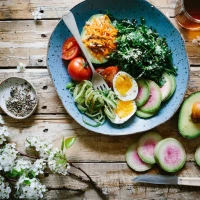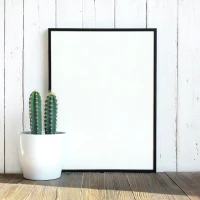Flatbreads have graced our tables for thousands of years, standing the test of time as a beloved staple in various cultures. Today, the spotlight shines on two exceptional varieties that have charmed their way into the hearts (and stomachs) of food enthusiasts across the globe: Naan and Pita. Each of these flatbreads brings its unique textures, flavors, and culinary possibilities, making the choice between them a delightful yet challenging endeavor. Whether you’re a home cook or a fine-dining connoisseur, the battle of naan versus pita is one that every vegetable lover should weigh in on. Join us as we unwrap the ultimate flatbread favorite and discover the veggie-centric recipes that make each of these bread a standout contender.
In the quest for the perfect flatbread to complement your vegetable dishes, it’s essential to understand what sets naan and pita apart. Factors like cooking methods, cultural roots, and texture play crucial roles in determining which bread earns a spot on your plate. Today’s article serves as your comprehensive guide to these baked beauties, offering insights, tips, and mouth-watering recipes to elevate your culinary game.
Whether you call yourself a foodie or just enjoy experimenting with breads and veggies in your kitchen, get ready for a flavorful journey as we dive deep into the aromas and essences of the ultimate flatbread favorite – the always inviting and ever-versatile naan and pita.
Naan: The Indian Flatbread Finery
Naan, a leavened flatbread originating from India, is a beloved component of South Asian cuisine and has quickly won global admiration for its soft, pillowy texture. The cooking process, typically involving a traditional clay oven called a tandoor, imparts a distinctive char and flavor to this bread. The use of yogurt and milk in the dough contributes to its sumptuous consistency, set apart from many other flatbreads.
Ingredients That Make Naan Stand Out
The Role of Yeast and Yogurt
Integral to naan’s appeal is the combination of yeast and yogurt in its dough, which creates a tender crumb and subtle tang. These elements distinguish naan and contribute to a complexity that is hard to replicate with other flatbreads.
Spicing It Up
Adding spices such as garlic, cumin, or nigella seeds, naan transforms into an aromatic experience. Embellishments like these also boost the bread’s compatibility with a variety of vegetable dishes.
Naan Pairings: Veggie Heaven
Combining naan with vegetables unlocks numerous possibilities. Rich curries or roasted vegetables, such as eggplants and bell peppers, find a harmonious partner in naan – its supple surface perfect for scooping up hearty bites and savoring the robust flavors.
The Ultimate Naan Recipe for Veggie Lovers
Perfecting the Dough
Creating the perfect naan begins with expertly kneaded dough, which should be left to rise until it doubles in size, ensuring that airy and light texture naan is known for.
A Toast to Tandoor Style
While not everyone has a tandoor at home, a very hot cast-iron skillet or oven can mimic the effect, giving the naan that coveted char typically achieved in professional kitchens.
Naan in Dietary Context
Naan can be adapted to suit a range of dietary preferences, including vegan options by substituting dairy with plant-based alternatives, thus fitting seamlessly into a vegetable-centric diet.
Pita: The Mediterranean Manna
Moving westward, we encounter the pita, a staple in Mediterranean and Middle Eastern cuisine. This versatile flatbread, often referred to as Arabic bread, is distinct in that it features a pocket, perfect for stuffing with an array of fresh veggies and dips.
Pita’s Hallmark: The Pocket
Pita bread’s most remarkable feature is the internal pocket that forms as steam puffs up the dough during baking. This pocket makes it an ideal candidate for sandwich-like creations, filled with salads, falafel, or simply used as a vessel for hummus and other spreads.
Crafting the Perfect Pita
Simplicity in Ingredients
Pita’s simplicity lies in its basic ingredients – often just flour, water, yeast, and salt. Yet, it is the precise baking technique that gives pita its signature pocket.
Baking the Bread
Baking at high temperatures is key. An oven or stove-top method can produce the desired puffiness, as long as the heat distribution is even and strong enough to cause the swift expansion that forms the pocket.
The Versatility of Veggies with Pita
The neutral taste profile of pita makes it the perfect canvas for the bold and various flavors of vegetables, from the briny zest of Greek-inspired salads to the spicy kick of Middle Eastern mezze.
Standout Pita Recipes for Vegetable Enthusiasts
Creating the Base
For a winning pita, getting the dough to the right consistency is vital, aiming for soft yet slightly firm to the touch, allowing it to hold up well against a bounty of veggie fillings.
Balancing Flavors
Pair pita with zucchini, tomatoes, olives, or pickled vegetables for an exquisite balance of flavors that will send your taste buds on a Mediterranean escapade.
Pita for All: Dietary Considerations
Pita bread is inherently vegan and can be made with whole wheat flour for a healthier twist. It’s a wonderful companion for vegetarian and vegan diets, highlighting the versatility and inclusivity of this cherished bread.
The Ultimate Showdown: Naan vs Pita for Vegetables
Texture and Taste
When it comes to choosing between naan and pita, consider how the texture and flavors of each bread will complement the veggies you plan to serve. Naan’s softness is perfect for saucy dishes, while pita’s pocket beckons for crisp, raw veggies.
The Fusion Factor
Fusion cuisine lovers might experiment with using naan in place of pita in traditional Mediterranean dishes, or conversely, pita as a base for Indian-inspired toppings – blurring the lines and creating entirely new taste sensations.
Health and Nutrition
Nutritionally, it is essential to note that both naan and pita can be tailored to meet health considerations. Opt for whole-grain versions or gluten-free alternatives to cater to specific dietary needs.
Choosing the Best Bread for Your Veggie Dish
Ultimately, the decision between naan and pita will rest on the type of veggie dish you’re creating. Consider the sauce, the preparation of vegetables, and the desired texture when making your selection.
Conclusion: Embracing the Diversity of Flatbreads
In the journey to find the ultimate vegetable-accompanying flatbread, naan and pita emerge as two top contenders, each with its distinct charm and culinary strengths. Whether it’s the softness and flavor depth of naan or the versatility and pocket-feature of pita, the choice is yours to make.
The flatbread showdown might not yield a singular winner, as both naan and pita hold a special place in the vegetable flatbread domain. As palates evolve and culinary boundaries stretch, the combination of these bread with a world of veggies continues to promise endless delectable adventures. Get creative, mix and match, and most importantly, savor every bite of the flatbread and vegetable harmony.










